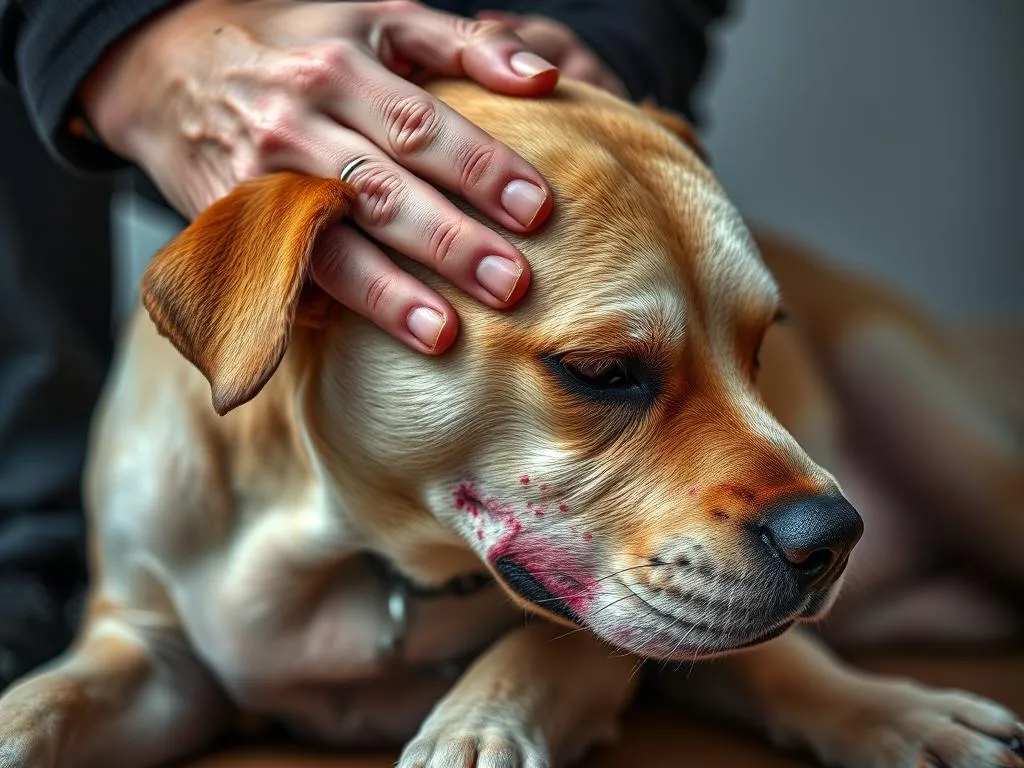
Introduction
Dog health care is a vital aspect of responsible pet ownership, encompassing everything from regular veterinary check-ups to dietary considerations and physical rehabilitation. One common issue that many dogs face is an injury to the anterior cruciate ligament (ACL), which can lead to pain and mobility challenges. Understanding how to care for your dog during this recovery period is crucial, and one effective method is massage therapy. This article focuses on how to massage a dog with a torn ACL, providing you with essential insights and practical techniques to support your furry friend’s healing process.
Understanding ACL Injuries in Dogs
What is an ACL Injury?
The anterior cruciate ligament (ACL) is a crucial stabilizing structure in a dog’s knee joint. It helps control the movement between the femur (thigh bone) and the tibia (shin bone). An ACL injury occurs when the ligament is torn or damaged, leading to instability in the knee. This injury can happen due to various factors, including sudden changes in direction, jumping, or even degenerative conditions that weaken the ligament over time.
Common Symptoms of ACL Injuries
Recognizing the symptoms of an ACL injury is essential for timely intervention. Common signs include:
- Limping or lameness: Your dog may favor one leg and exhibit a noticeable limp, especially after physical activity.
- Swelling around the knee: Inflammation can occur due to fluid buildup in the joint.
- Reduced activity levels: Injured dogs often become less active and may avoid running or playing.
- Difficulty in jumping or climbing stairs: This is particularly evident in dogs that previously had no issues with these activities.
Risk Factors for ACL Injuries
Certain factors can increase a dog’s risk of suffering an ACL injury:
- Breed predispositions: Larger breeds, such as Labrador Retrievers and Rottweilers, are more prone to ACL injuries than smaller breeds.
- Age and weight considerations: Overweight dogs and older dogs are at higher risk due to the increased strain on their joints.
- Previous injuries and health conditions: Dogs with a history of knee problems or conditions like arthritis may be more susceptible to ACL injuries.
Importance of Massage Therapy
Benefits of Massage for Dogs
Massage therapy is an invaluable tool in a dog’s rehabilitation process, offering several benefits:
- Pain relief and reduced muscle tension: Massage can alleviate discomfort, helping your dog feel more at ease.
- Improved circulation and lymphatic drainage: Enhanced blood flow helps deliver nutrients to tissues and remove waste products, promoting healing.
- Enhanced mobility and flexibility: Regular massage can improve your dog’s range of motion and overall physical performance.
- Psychological benefits: Massage can reduce anxiety and stress, providing a calming effect on your dog during recovery.
When to Begin Massage Therapy
Timing is crucial when it comes to initiating massage therapy. Generally, you should wait until your dog has stabilized post-injury or surgery. Consult your veterinarian for specific guidance. Look for signs that indicate your dog is ready for massage therapy, such as decreased pain levels and a willingness to engage with you.
Preparing for the Massage
Creating a Comfortable Environment
Before starting the massage, it’s essential to create a serene environment. Choose a calm and quiet space where your dog feels safe. Ensure that the temperature is comfortable and that the lighting is soft to promote relaxation.
Gathering Necessary Supplies
Having the right supplies will make the massage experience smoother. Recommended tools include:
- Towels: These can be used to provide a comfortable surface for your dog to lie on.
- Massage oils (if applicable): Use dog-safe oils to enhance the massage experience.
- Treats: Have some treats on hand to reward your dog for positive behavior and reinforce trust.
Assessing Your Dog’s Comfort Level
Before beginning, assess your dog’s comfort level. Watch for signs of discomfort or anxiety, such as panting, whining, or trying to move away. Always approach the massage with gentleness, allowing your dog to adapt to your touch.
How to Massage a Dog with a Torn ACL
Getting Started: Basic Techniques
To start the massage, begin with gentle petting and stroking to help your dog relax. Use slow, soft movements to warm up the muscles and ease any tension. This initial phase is essential as it prepares your dog’s body for more focused techniques.
Specific Massage Techniques
Incorporating specific massage techniques can maximize the benefits for your dog:
-
Effleurage: This technique involves light, gliding strokes over the body. It’s excellent for relaxation and warming up the muscles. Start at the neck and work your way down the back and legs.
-
Petrissage: This involves kneading the muscles with your hands, similar to how dough is kneaded. Focus on the thighs and calf muscles to relieve tension.
-
Friction: Use deep circular motions with your fingers to apply pressure on specific areas, particularly around the knee joint. Be cautious not to apply too much pressure, as this can cause pain.
-
Compression: Gently press into the muscle to improve blood flow. This technique is beneficial for areas around the knee and can help reduce swelling.
Focusing on the Injured Area
When massaging a dog with a torn ACL, it’s crucial to focus specifically on the knee and surrounding muscles. Use the techniques mentioned above, but always prioritize your dog’s comfort. If your dog shows signs of pain or discomfort, back off immediately and reassess.
Post-Massage Care
After the massage, observe your dog for signs of relaxation and comfort, such as lying down peacefully or seeking your attention. Recommended follow-up activities include gentle stretches or low-impact walks, as advised by your veterinarian. This will help maintain mobility and promote further healing.
Additional Considerations
When to Seek Professional Help
While at-home massage can be beneficial, there are times when you should seek professional help. Signs that indicate the need for veterinary intervention include:
- Persistent pain or increased swelling.
- Changes in appetite or behavior.
- Difficulty in movement that does not improve with massage.
A professional massage therapist can provide specialized treatment tailored to your dog’s needs, especially if the injury is severe.
Integrating Massage with Other Treatments
Massage therapy should be part of a holistic approach to recovery that may include physical therapy and rehabilitation exercises. Consult your veterinarian to develop a comprehensive plan that incorporates various modalities for effective recovery.
Conclusion
Incorporating massage therapy into your dog’s health care routine can significantly enhance their recovery from an ACL injury. By understanding how to massage a dog with a torn ACL, you can provide essential support that promotes healing, reduces pain, and improves overall well-being. Always consult with your veterinarian to tailor a plan that best suits your dog’s unique needs and to ensure a safe and effective recovery process.
Massage therapy is not just a luxury; it can be a crucial element of your dog’s rehabilitation journey. With patience, gentle techniques, and a loving approach, you can help your furry friend regain their mobility and live a happier, healthier life.









